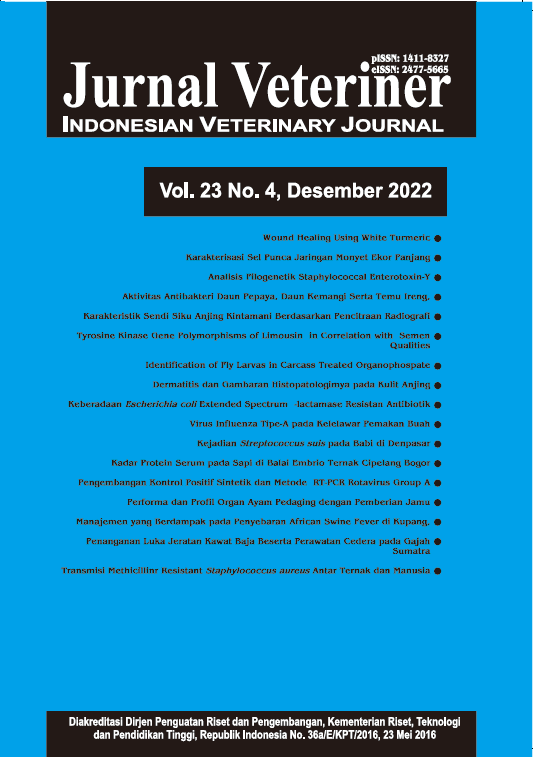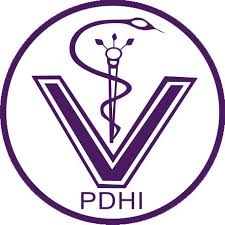Aktivitas Antibakteri Ekstrak Daun Pepaya, Daun Kemangi Serta Temu Ireng, dan Madu terhadap Bakteri Serratia marcescens
Abstract
Antibiotic Growth Promoters (AGPs) are antibiotics that are used commonly in livestock farming to increase animals growth rate. The use of AGP has been prohibited in Indonesia (No.14/PERMENTAN/PK.350/5/2017). AGP banning urges some innovations to find the alternative of AGP and one of them is utilization of natural resources. Papaya leaves, basil leaves, Curcuma aeruginosa rhizomes and honey contain flavonoid that has antibacterial activity. The purpose of this research is to know the effect of Papaya leaves, basil leaves, Curcuma aeruginosa rhizomes and honey against Serratia marcescens growth. Re-identification of Serratia marcescens were done by looking at the colony morphology, cell morphology and biochemical tests. Antibacterial activity of ethanol (100%) and aquades (33.33%) extract of the herbals and the honey (100%) against Serratia marcescens were tested by disc diffusion method. Each test was repeated 2 times. The results showed that Lanceng (Trigona bee) honey from Gunung Kidul, Black honey from Lombok, White honey from Lombok, ethanol and aquades extract of the herbals are not effective to inhibit Serratia marcescens growth. Commercial honey (7.59±.22 mm) has the highest antibacterial acivity to Serratia marcescens, followed by honey from Kupang (6.69±.21 mm). Commercial honey and honey from Kupang have moderate antibacterial activity.



















